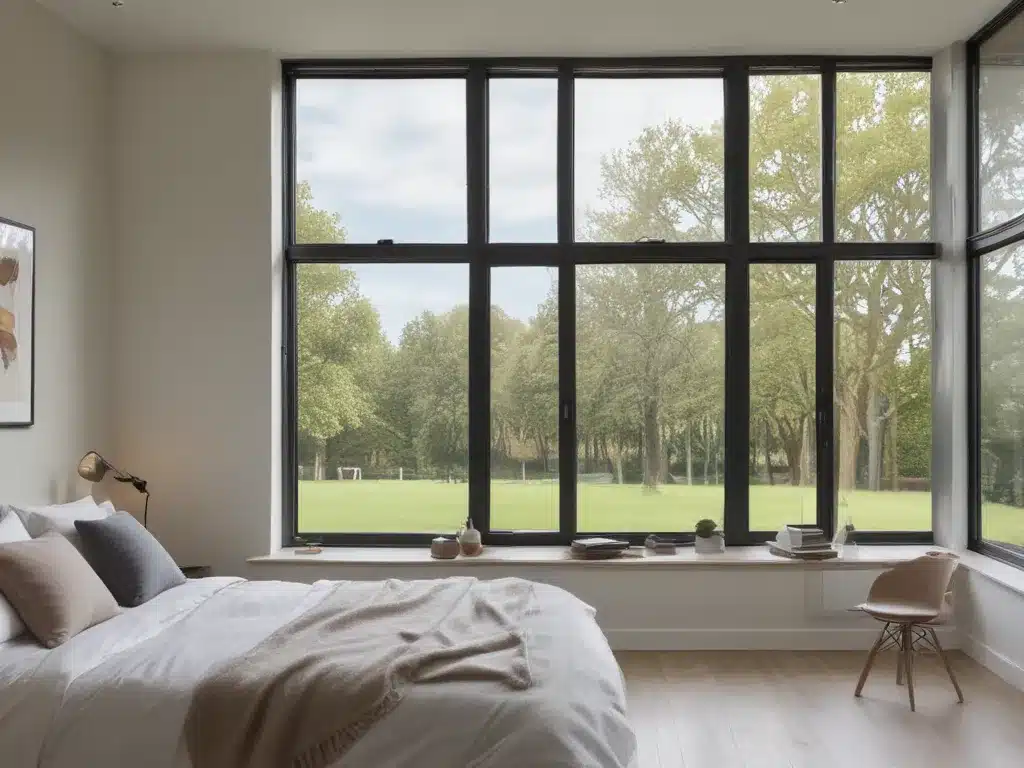
Introduction
In today’s world, where energy efficiency and sustainability are paramount, smart windows have emerged as a game-changer in the realm of home design and construction. These innovative windows not only allow homeowners to control the amount of natural light and heat entering their living spaces but also offer a range of additional benefits that can significantly improve their overall comfort and well-being. In this comprehensive article, I will explore the fascinating world of smart windows, delving into their functionality, advantages, and real-life applications.
What are Smart Windows?
Smart windows, also known as dynamic or electrochromic windows, are advanced glass panels that can dynamically adjust their tint or opacity in response to external conditions or user preferences. These windows typically consist of multiple layers of specialized materials, including electrochromic coatings, conductive layers, and ion-storage layers. By applying a low-voltage electrical current, the electrochromic layer can reversibly change its optical properties, allowing the window to transition from transparent to tinted or opaque.
How do Smart Windows Work?
The process by which smart windows operate is a marvel of modern engineering. The electrochromic layer, typically composed of materials like tungsten oxide or poly(3,4-ethylenedioxythiophene) (PEDOT), undergoes a redox reaction when an electrical potential is applied. This reaction causes the material to change color, allowing the window to transition between various tint levels. The conductive layers, often made of transparent conductive oxides like indium tin oxide (ITO), facilitate the flow of electrical current across the window’s surface.
Benefits of Smart Windows
Smart windows offer a multitude of benefits that can significantly enhance the living experience in any home. Here are some of the key advantages:
- Energy Efficiency: By controlling the amount of sunlight and heat entering a space, smart windows can reduce the need for artificial lighting and air conditioning, leading to substantial energy savings.
- Improved Comfort: Smart windows allow homeowners to create the perfect indoor environment by adjusting the tint levels to minimize glare and excessive heat while still enjoying natural light.
- Privacy and Security: When fully tinted or opaque, smart windows can provide enhanced privacy and security, preventing unwanted visibility from outside.
- Aesthetics: Smart windows can seamlessly integrate into modern architectural designs, offering a sleek and sophisticated appearance.
- Ultraviolet (UV) Protection: Many smart window technologies incorporate UV-blocking capabilities, protecting interior furnishings, artwork, and occupants from harmful UV radiation.
- Customizable: Smart windows can be programmed to adjust their tint levels automatically based on factors like time of day, weather conditions, or user preferences, providing a truly personalized experience.
Real-Life Applications
Smart windows have found applications in various settings, from residential homes to commercial buildings and even automotive applications. Here are some real-life examples:
- Residential Homes: Smart windows can be installed in living rooms, bedrooms, and other areas to maximize natural light and thermal comfort while reducing energy costs.
- Office Buildings: Commercial spaces can benefit from smart windows by optimizing daylight harvesting, reducing glare, and improving employee productivity and well-being.
- Vehicles: Automotive companies are exploring the integration of smart windows in cars, allowing drivers to control the amount of sunlight and heat entering the cabin for enhanced comfort and safety.
- Greenhouses: Smart windows can be used in greenhouses to regulate light levels and temperature, promoting optimal plant growth and reducing energy consumption.
- Museums and Art Galleries: By controlling light exposure and UV radiation, smart windows can help protect valuable artwork and artefacts while enhancing the viewing experience for visitors.
Case Study: ABC-Home Ltd.
ABC-Home Ltd., a leading home construction company, has been at the forefront of implementing smart window technology in their residential projects. One of their recent flagship projects, a luxury home in Aberdeen, showcases the practical application of smart windows.
According to Adrian, the lead architect on the project, “By incorporating smart windows throughout the home, we were able to create a harmonious balance between natural light, thermal comfort, and energy efficiency. The homeowners can easily adjust the tint levels to suit their preferences, whether they desire bright and airy spaces or a more intimate and cosy atmosphere.”
Josh, the homeowner, shared their experience: “The smart windows have truly transformed our living experience. Not only do we enjoy beautiful natural light without the discomfort of glare or excessive heat, but we’ve also noticed a significant reduction in our energy bills. The ability to control the windows with a simple app or voice command has been incredibly convenient and user-friendly.”
Future Developments
The smart window industry is rapidly evolving, with researchers and manufacturers continuously exploring new materials, technologies, and applications. Here are some exciting developments on the horizon:
- Transparent Photovoltaic Smart Windows: Researchers are working on integrating transparent photovoltaic cells into smart windows, allowing them to generate electricity from sunlight while regulating light and heat transmission.
- Thermochromic Smart Windows: These windows can automatically adjust their tint based on temperature changes, offering enhanced energy efficiency and thermal comfort without the need for external controls.
- Flexible and Rollable Smart Windows: The development of flexible and rollable smart window materials could open up new possibilities for portable and temporary applications, such as outdoor events or emergency shelters.
- Multi-Functional Smart Windows: Future smart windows may incorporate additional functionalities, such as self-cleaning capabilities, sound insulation, or integrated displays for smart home controls or entertainment purposes.
Conclusion
Smart windows represent a revolutionary advancement in home design and construction, offering a unique blend of energy efficiency, comfort, and aesthetics. By harnessing the power of innovative materials and technologies, these windows allow homeowners to maximize natural light and warmth while minimizing energy consumption and environmental impact. As the demand for sustainable and intelligent living spaces continues to grow, smart windows are poised to become an integral part of modern home design, transforming the way we interact with our living environments.
















